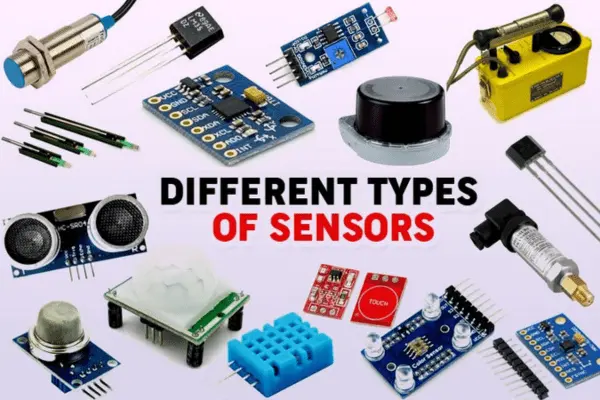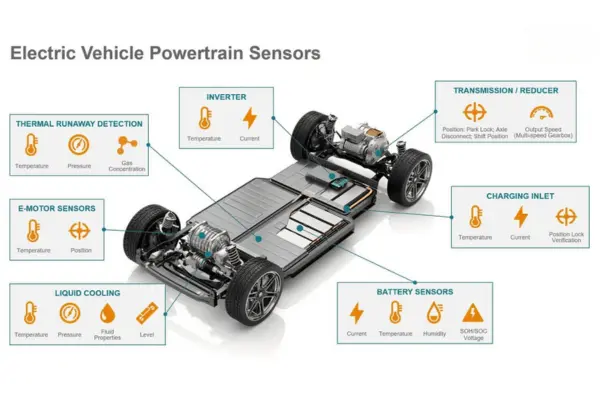Introduction
Autonomous vehicles, or self-driving cars, are cutting-edge technologies that have the potential to transform transportation and improve the effectiveness and safety of our roads. These cars use a combination of hardware and software for navigation and autonomous operation. We’ll focus on the hardware components of autonomous vehicles in this introduction since they are critical to their smooth functioning.
1. Sensors
Autonomous vehicles are equipped with an array of sensors to provide them with environmental data. These sensors are made up of:
- LiDAR (Light Detection and Ranging): LiDAR sensors use laser pulses to create detailed three-dimensional maps of the area around the vehicle. These maps let the car better understand the location and movement of objects, pedestrians, and other vehicles.
- Radar: Radar hardware employs radio waves to gauge the separation and speed of a question. They are especially valuable in severe climates since they are less influenced by rain, mist, or snow than LiDAR is.
- Cameras: High-resolution cameras capture still images and films of the surroundings. Sophisticated computer vision algorithms are used to process these images to recognize objects, read road signs, and distinguish pedestrians.
- Ultrasonic Sensors: These sensors measure the time it takes for sound waves to return after they leave the vehicle and pass near objects.
- GPS: For localization and navigation, use the Global Positioning System (GPS). It aids in precise navigation by giving the vehicle information about its precise location.

2. Computing Hardware:
- Central Processing Unit (CPU): Hardware for autonomous vehicles is equipped with powerful CPUs that can process enormous amounts of data quickly. These CPUs power the software that determines how to steer the automobile based on sensor data analysis.
- Graphics Processing Unit (GPU): Visual tasks requiring complex visual input, such as image identification and computer vision, can be processed more quickly with GPUs.
- FPGA (Field-Programmable Gate Array): Field-Programmable Gate Arrays, or FPGAs, are hardware components that may be configured to carry out specific tasks by reprogramming. They are employed in real-time control and signal processing.
- Sensor Fusion Units: These devices combine information from multiple sensors to create a comprehensive image of the environment surrounding the car. This informs judgments about safe driving.
3. Systems of Control:
Actuators control all aspects of a vehicle’s motion, including acceleration, braking, and steering. They are required to implement the decisions that the autonomous vehicle’s software has made.
- Drive-By-Wire Systems: Drive-by-wire systems are a prevalent characteristic of autonomous vehicles. They replace traditional mechanical connections with electronic controls. This enables accurate control and communication between the vehicle’s components and control system.
4. Communication Systems:
Vehicle-to-Everything (V2X) communication facilitates communication between vehicles as well as between vehicles and other vehicles as well as between vehicles and infrastructure, such as road signs and traffic signals. Information sharing can enhance safety and traffic flow.
5. Safety and redundancy systems
Autonomous vehicles usually use backup and redundancy systems to ensure safety. This covers fail-safe devices, backup power systems, and additional sensors.
6. Human-machine interface, or HMI
The HMI is the users’ and passengers’ interface for communication with the vehicle. Its features, which are easy to use, include speech recognition and displays.
Advantages of Hardware for Autonomous Vehicles
The development and widespread adoption of autonomous vehicle hardware is being driven by the technology’s many efficiency and safety benefits. Some of the main benefits of hardware for autonomous vehicles are as follows:
1. Enhanced Security
- Decreased Human Error: Autonomous Vehicle Hardware is less likely to be associated with common accident causes such as driver fatigue, distraction, and poor judgment. Vehicle judgment is made faster and more precisely because of hardware components such as cameras and sensors, which reduce the likelihood of collisions.
- Advanced Sensor Technology: LiDAR, radar, and video systems equipped with cutting-edge sensor technology provide a 360-degree perspective of the surroundings around the vehicle, enabling the quick identification of hazards and impediments. Driving is safer due to enhanced perception and concentration.
- Improved Reaction Time: Autonomous cars can respond to issues far faster than human drivers can. They can execute commands like braking and steering quickly and precisely, and they can process data in milliseconds.

2. Reduced Traffic Congestion:
The capacity of autonomous automobiles to connect with traffic infrastructure and with one another makes effective traffic flow possible. Reduced traffic jams, improved traffic flow, and increased overall transportation efficiency could all be outcomes of this connectivity.
To select the fastest routes in real-time and avoid traffic jams and bottlenecks, GPS and traffic data can be utilized.
3. Fewer emissions and fuel use:
- Driving Pattern Optimization: Autonomous vehicles can optimize their acceleration and deceleration techniques to save fuel consumption and emissions.
- Eco-Driving: By utilizing real-time data and advanced algorithms, autonomous vehicles can implement environmentally friendly driving techniques, thereby reducing their environmental impact.
4. Accessibility:
- Enhanced Mobility: For those who are unable to drive owing to age, a disability, or other circumstances, using autonomous vehicle hardware can offer accessibility and independence.
- Transportation on Demand: A broader range of customers can get comfortable transportation on demand through ride-sharing and autonomous taxi services.
5. A decline in traffic accidents and fatalities
Error-free operation and state-of-the-art safety measures can significantly reduce the number of traffic accidents and the resulting deaths.
6. Parking Efficiency
Autonomous Vehicle Hardware can drop off passengers at their location and let them find parking on their own. This could lead to less traffic in cities and better use of parking spots.
7. As a Service, Transportation:
Fewer people could need to purchase their automobiles with the advent of autonomous vehicle fleets managed by ride-sharing or transportation service companies, perhaps reducing traffic and saving people money.
8. Better Handling of Traffic:
Autonomous vehicles can provide valuable data to traffic management systems to enhance the control of traffic signals and congestion.
Drawbacks of Hardware for Autonomous Vehicles
while autonomous vehicle hardware offers numerous advantages, there are also significant drawbacks and technical challenges. These problems and limitations need to be fixed if autonomous vehicles are to be employed extensively. A few drawbacks are as follows:
1. Price:
Hardware for autonomous vehicles, including advanced sensors, powerful CPUs, and redundant systems, can be expensive. This pricing might be considered a significant barrier to entry for both manufacturers and consumers.
2. Intricacy
Self-Driving Car Both software and hardware can be very complex. These systems can be costly and challenging to maintain, troubleshoot, and repair.
3. Dependability
While safety and redundancy are taken into account during the design process of autonomous vehicle technology, malfunctions or system breakdowns are still possible. Ensuring the dependability and safety of each piece of equipment is a critical objective.
4. Online safety:
Cyber-attacks may target autonomous vehicle hardware. Hackers might be able to take control of car systems, which would be extremely dangerous. Cyber threat defense is a serious issue.
5. Moral Dilemmas:
Autonomous vehicles may have to choose between saving pedestrians and passengers in the event of an accident when presented with moral quandaries. There are continuous discussions regarding how to resolve these moral dilemmas.
6. Employment replaced:
There may be job losses as a result of the widespread deployment of autonomous vehicles in industries like logistics and transportation. Professional drivers, like those who operate trucks and taxis, may run into challenging work circumstances.
7. Acceptance of Infrastructure:
It is plausible that the existing road infrastructure is not entirely ready to accommodate self-driving cars. Upgrading the infrastructure to allow V2X connectivity and other features could be costly and time-consuming.

8. Privacy concerns about data:
Autonomous vehicles collect a lot of data about their surroundings and occupants. Ensuring that this data is kept private and secure is a crucial issue.
Conclusion:
To sum up, autonomous A vital part of cutting-edge technology that promises to improve daily life and transform transportation is vehicle hardware. These vehicles can function safely and effectively without the need for human involvement thanks to their advanced array of sensors, computer systems, control units, and communication devices. Improved safety, less traffic, less fuel consumption, greater accessibility, and the possibility of large cost savings are some advantages of autonomous vehicle hardware.
But in addition to these benefits, there are a few significant obstacles and disadvantages that need to be considered. These include the need to win over the public’s approval and trust, the high cost of technology, complexity, issues with dependability, cyber security threats, and obstacles related to laws and regulations.
Governments, IT companies, automakers, and the general public must work together to drive the transformative journey that is the development and implementation of autonomous vehicle hardware. Prioritizing safety, addressing moral conundrums, and working toward an inclusive and sustainable future for autonomous vehicles is crucial as technology develops. The degree to which autonomous vehicles become a part of our everyday lives and transform transportation will ultimately depend on how well the benefits and drawbacks are balanced.
Learn more about self-driving cars and investigate the best items @dorleco.com that are required for them. Contact us at info@dorleco.com for detailed information.

